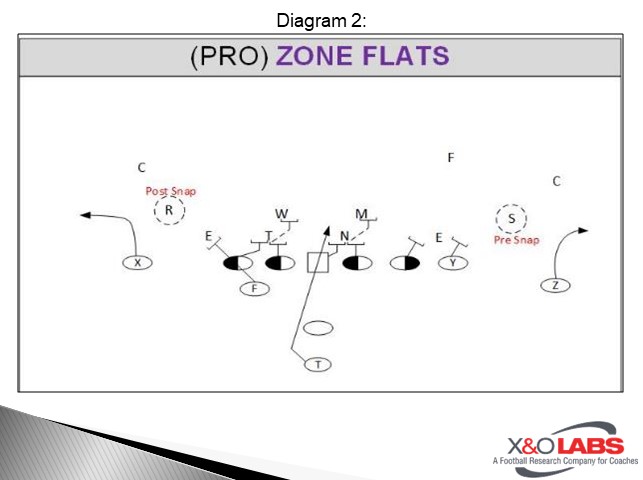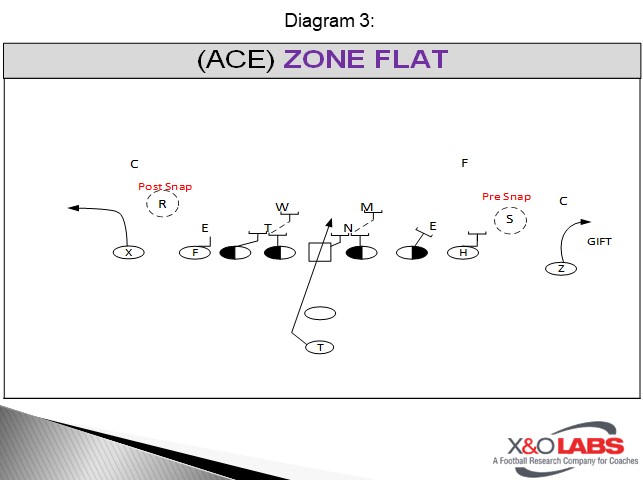By Brent Dearmon
Head Football Coach
Bethel University (TN)
Twitter: @BrentDearmon
Introduction
In 2017, we called 313 RPOs out of 885 plays. That means that 35% of our offense was RPOs. The results were overwhelmingly positive on those plays, but perhaps the best stat is that we had zero sacks and zero interceptions on RPO plays. The main reason we were able to do that was because we found ways to be gap sound and protect our QB.
As the season went on, we found ourselves in 21 personnel more than we had anticipated to help create an extra gap to protect our QB. In this report, we will show a few of those plays, but more than that we will explain the protection and the read for the QB.
Coaching QBs
Before we get into plays, I want everyone to understand how we teach our QBs. This chart is discussed in depth with every RPO we install. Our QBs understand which gaps they are protected, in which gaps they are reading, and in which gaps the protection is weak. (Diagram 1)



Zone Flat
In this concept the QB will learn the following:
- The OL and HBs will protect him from front side D gap to back side C gap.
- His pre-snap “quick game” throw will always be opposite the side. He will turn his eyes to this during the RB mesh. If the pre-snap “gift” flat route is there, we want him to throw it now.
- If the pre-snap throw is not there, he will then ride read the boundary D gap player. If the D gap player attaches hard to the run fit, he will then pull and throw the boundary flat route.

To study game film of this concept, click on the video below:









